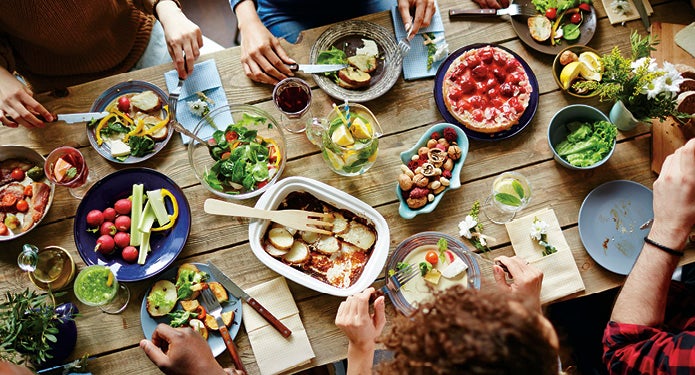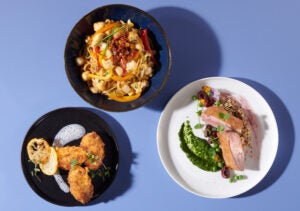Cultural food connections are good for the body and the mind, linking to happy memories and traditions.
Food can nourish the mind as well as the body. It soothes and comforts, evokes happy times and inspires warm emotions. That makes it a tremendous asset in dealing with memory-care impairments.
“Individuals with dementia often relate to childhood memories,” explains Dana Fillmore, Gordon Food Service Healthcare Segment Manager. “Providing culturally appropriate meal choices is a great way to help make that connection.”
German heritage
For many North Americans, culturally appropriate meals will reflect a German influence. More than 50 million Americans and 3 million Canadians claim German ancestry.
That’s a lot of people who may have grown up on sauerkraut and sauerbraten. These and other traditional German dishes are the very definition of comfort food for an appreciable segment of the population. So they can engage your memory-care residents and spark a wave of nostalgia in others.
Yet German cuisine isn’t just a link to the past. Technomic, Inc., named it the number one culinary trend for Canada’s restaurant industry in 2016, and reported that German pretzel bread, housemade sausages, mustard-based sauces and spaetzle (egg noodles) are trending on American menus.
Incorporating German flavours can be as easy as adding sauerkraut to your sandwiches and casseroles. Sauerkraut is traditionally made by fermenting a mix of shredded cabbage, salt, and sometimes other spices, but modern krauts are being fashioned with a variety of vegetables. Classic or contemporary, the sharp, sour taste can perk up tired taste buds.
German sausages can be made the centrepiece of a meat-and-potatoes meal or grilled on the patio for a summer celebration. Pot-roasted meats like sauerbraten and schweinsbraten make wonderful Sunday dinners. Beer cheese soups are an excellent starter and Black Forest Cake is an ever-popular dessert.
Portuguese flavours
Like German fare, Portuguese cuisine evolved from hearty peasant food. But Portugal’s early maritime dominance brought a world of new ingredients and flavour profiles to the European continent. Thus, the country’s traditional fare is a fusion of multicultural flavours.
Portuguese dishes are not as widely known here as German foods, owing to the much smaller number of people with Portuguese ancestry. The highest-profile meal may be Peri-Peri Chicken, which is the centrepiece of the Nando’s casual dining chain.
Referred to as Frango Piri Piri in Portuguese, this dish traditionally combines grilled chicken with spicy chili peppers, herbs and spices. The tangy heat of the marinade can appeal to taste buds dulled by age.
Cod is a Portuguese staple that can be prepared in a variety of ways. There are endless variations on stew, layered with different proteins, vegetables, and seasonings and slow-cooked to achieve rich flavour. Custard pastries are popular desserts.
Build your menu of German and Portuguese dishes by asking residents and their families to share their favourite recipes with you. You’ll help them build new memories even as you connect them to their past.
The German Pantry
- Proteins wurst (sausage), pot-roasted beef and pork
- Fresh Produce potatoes, cabbage, carrots, radishes
- Fresh Herbs parsley, thyme, bay leaf, chives
- Seasonings vinegar, horseradish, black pepper, caraway
- Classic Dishes bratwurst, weinerschnitzel, sauerkraut, spaetzle, sauerbraten
The Portuguese Pantry
- Proteins seafood, pork sausage, grilled chicken and beef
- Fresh Produce tomatoes, cabbage, onions, potatoes
- Fresh Herbs bay leaf, parsley, cilantro, mint
- Seasonings olive oil, garlic, paprika, red pepper paste
- Classic Dishes caldo verde (kale soup), chicken piri piri, sweet bread, bolinhos (cod fritters)

























